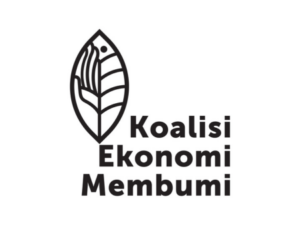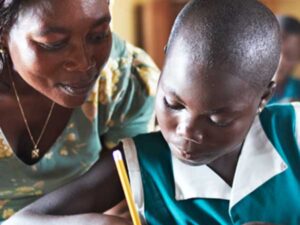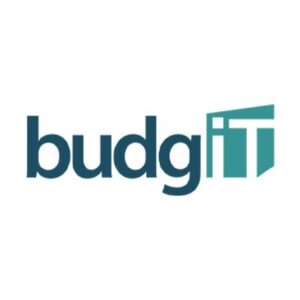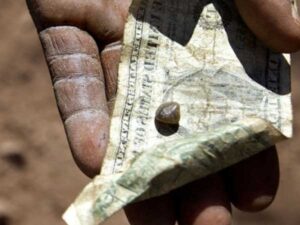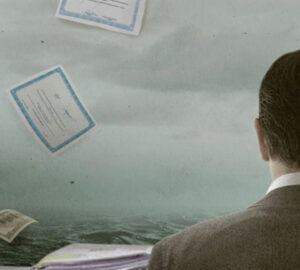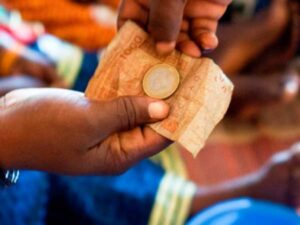Amazônia Vox amplifies the voices of those who live and work in the Amazon by connecting journalists, experts, and communities across the region. Through storytelling, collaboration, and the sharing of local knowledge, Amazônia Vox aims to build more accurate, plural, and solutions-focused coverage that strengthens understanding of the Amazon and the people who sustain it.
Daniel Nardin from Amazônia Vox spoke with Ambika Samarthya-Howard on October 10, 2025. Click here to download and read the full interview.
Ambika Samarthya-Howard: What made you want to create your own organization?
Daniel Nardin: I’ll tell you from the beginning. I’m a journalist based here in Belém [capital of Brazil’s Pará State]. When I was 23, I worked for seven years in the Federal Senate in Brasília. I came back to Belém in 2014, and I was secretary for communication of Pará State for five years.
Then I decided to change my career. It was too political. I needed to change it. I went to private companies to work as a communications manager. I spent only two years doing that. Then I became the journalism director of Grupo Liberal. Grupo Liberal is the main outlet here in Belém, because they have two daily newspapers, one TV station, one radio station, and a website. The TV station is a global channel in Belém. They have a director only for TV, and I was the director for newspaper, online, social media, and radio.
[I decided to create] Amazônia Vox, first [because] I realized we had a problem. How can we collaborate to fix it? Because I worked in different positions, journalists around Brazil were always asking me [to connect them with] researchers, local journalists, activists, photographers or sources, local voices. All my career I was open to helping people find each other, like other professionals doing the same. But as a journalist, how can I collaborate with that?
The second point is, Brazil is situated in the Global South. “Central” Brazil still is considered to be São Paulo, Rio de Janeiro. The North of Brazil is a peripheral area for all the issues you can imagine. There’s a lot of media attention on our region, but sometimes they ask researchers and scientists in São Paulo and in Rio to talk about the Amazon. And when I speak with journalists from São Paulo and Rio, they say, “Oh, I would like to listen to more local voices, but how can I find them?”
I was covering COP27, in Sharm El-Sheikh, Egypt, for Grupo Liberal, and when I came back, I decided to quit my job and start another project with more purpose. I realized there’s an opportunity here, because all the world was talking about Amazon at COP27, but a lot of panels were talking about the Amazon without Amazonians.
That’s one thing. Another thing is that I was the director of a team of journalists with 70 professionals. At that time, I didn’t know too much about climate change. How can I [give feedback] to my younger reporters? I needed to study more. I needed to improve my skills in climate change, because this is the main issue for our generation, even in journalism. Another thing is, how can I create more connections?
I quit my job and thought about how to create a bank of sources on the Amazon, like a tool for journalists, and a bank of local communications professionals, such as journalists, photographers, et cetera, to work in partnership with different journalists around the world. Because you can combine these two issues, climate change and the Amazon.
Ambika Samarthya-Howard: You’re saying that often when people think of climate change, they think of the Amazon, and when they think of the Amazon, they think of climate change? That they use it interchangeably?
Daniel Nardin: Yes. Not all the time, but often.
So, how can I create it? I had six months to make this work. I talked with a friend of mine, Cleide Pinheiro, she’s the owner of a PR agency here in Belém, the Temple Agency. She’s been a very good friend of mine for decades. At that time she wanted to create a nonprofit institute. I helped her to create that institute, called Bem da Amazônia Institute, and she gave me a designer and a web designer to help me to create Amazônia Vox.
Amazônia Vox was accelerated like a startup by Institute Bem da Amazônia, without any money, but with professionals and technical support. Only three months after we launched the Amazônia Vox project, we were selected for a grant from YouTube to produce content. After that, other grants and projects came and … we are still going on.
Ambika Samarthya-Howard: How did you get your team? How did you find people doing this work the way that you wanted to do it? You were working at one of the biggest and most prestigious outlets in Belém. You realized, doing climate reporting, that few journalists are connecting to Amazon voices. You decided you’re going to start Amazônia Vox. But how did you find those voices? How did you find journalists based in the Amazon?
Daniel Nardin: Maybe I had a good background for my experience from my work in government and at the outlet. You know some stories, some people. I like to go to different events, science events. You know people, and you connect with them. When I talk with these scientists, activists, and communities, they say the same thing: we already have voices. We need more space for our voices. When I talk with journalists in Brazil, they say, “Yes, we want to listen, but how to find them?” Maybe Amazônia Vox can create an interlink to connect them.
Two steps. First step, network. The network I had the chance to build. When we publish it on a website and social media and send a message by WhatsApp, now, with Amazonia Vox, we are creating a bank of sources and a tool for journalists. It’s free, it’s a collaboration, and please help us to improve our bank. In a few months, we received a lot. With the support I mentioned, with YouTube, we were able to pay nine journalists, one per state in the Brazilian Amazon, and they have a mission: you need to talk with at least 100 sources and input them in our bank.
In six months, we had 500 sources in our bank. Maybe we had a lot of luck with the context: the world is talking about the Amazon. I believe in God, so I believe God blessed us. In Brazil we have an expression: you want to eat something, and someone gives you a plate of food. Or, better and simple: it’s a win-win situation. The right thing at the right time.
Ambika Samarthya-Howard: Who are these sources?
Daniel Nardin: We improved our bank of sources. In the beginning, it wasn’t so good, because we had too many authorities: mayors, politicians. With the support of ICFJ, International Center of Journalists, we could pay other journalists to clean our bank, so we decided to take off of the politicians and add scientists. We talked with different universities in the Amazon. Now, with the support of Serrapilheira Institute, we have 1,400 sources with a brief profile, photo, and contact. 60% of them are scientists based in Amazon on different issues, and 20% are traditional voices. Traditional voices look like Indigenous voices, community voices, et cetera. I don’t have data on gender. I don’t have this filter. Not yet, but we want to improve it.
If you want to find sources about climate and the Amazon, you just type “climate,” and you’re going to find a climatologist, or a meteorologist, or an Indigenous activist, or a youth activist. You can find different people there.
Ambika Samarthya-Howard: You also produce and host stories. How do you choose what to cover?
Daniel Nardin: We started with these tools, a bank of sources and a bank of freelancers. We know about Solutions Journalism Network, and we decided to create content with this perspective. It’s so important. You already have a lot of journalists and a lot of outlets talking about the problems of the Amazon, and it’s so important. But we also need to talk about the solutions, local solutions, because if you just listen to the problems, you think, “Oh, they don’t know how to protect the Amazon, and we need to go there to save the Amazon.” No, no. You need to support who is here in the Amazon and already doing something, and they need recognition and support. This is the perspective of solutions journalism that we defend.
We just started to look for these stories. There is an increase of deforestation in the Amazon—OK, but where this is not happening, what is the community, and what are they doing? We use our audience. For example, we publish posts on our social media, saying like, “Everyone’s talking about the waste problem in Belém, but who knows of any project or initiative doing something against it?”
We receive 40 comments: “You must meet this or that.” We use our audience to suggest stories. These scientists and communities want to show what they are doing.
Ambika Samarthya-Howard: For you, what’s a successful story?
Daniel Nardin: Solutions journalism can best be described as journalism about responses. It doesn’t necessarily have to be a silver bullet, or the only or best solution. It’s a response—a path—and it comes with its own challenges and limitations; it may not solve everything. But it’s still a response, and that deserves to be told, as long as we have stories or data that provide evidence it’s making some difference. And then it’s a story worth telling.
I don’t know how it is in the US, but in our context here, it’s not common for a journalist to say good things about another journalist’s project.
Ambika Samarthya-Howard: Is it because people are so competitive?
Daniel Nardin: Maybe. One year after we started, some of them said, “They just talk about good things. It’s not journalism, because journalism needs to talk about the reality.” Okay. Aren’t solutions also reality? I was at an event and one journalist said, “My journalism is real journalism, because I show the problems. I don’t like solutions, because we need to tell the truth.” I said, “Okay, that’s also important, but is solutions journalism fake journalism? No. It’s real people, real stories, and this is also important.”
And we have some evidence. In just two and a half years, we have received three awards. Roche Award for Health Journalism. It’s an international prize organized by Fundación Gabo, in Colombia. The first time an outlet based in the north of Brazil received this award. We received Sebrae Awards. It’s a national award in Brazil. Again, the first time an outlet from the north region received this award. We were a grantee of ICFJ. Only five in the north, and we were one of them. And, with a collaboration with Agencia Publica series, we received another recognition, from Covering Climate Now.
Ambika Samarthya-Howard: Outside of funding, what’s hard for you? Everybody loves you, you get all the awards, you’re in everything, everybody wants to work with you. Then what’s the challenge?
Daniel Nardin: Not everybody. [laughs] You need to listen to more people. I believe we are creating a different perspective. We don’t receive any local support, because there’s a local saying, a terrible saying: “What is good comes from outside.”
Ambika Samarthya-Howard: What do you mean you don’t get any local support? Do you mean local funding support?
Daniel Nardin: Yes. In the beginning, I was very sad and I felt like quitting. Today, I say, thank god they don’t support me. Because at that time I needed every kind of support. If the local government said, “I will support you,” maybe I would have accepted, because I needed money to pay the people. But they didn’t. Thank god, because a few months later, I received support from different parts.
It’s difficult, because there is suspicion about local projects. “What kind of project? Who is doing it? Why are you doing it?’ When you try to start this conversation on a national [level], it’s difficult, because sometimes in São Paulo or Rio, they’ll look at you and say, “Oh, so cute,” but they [don’t help]. Because of this, it’s so important when we receive grants from ICFJ, because if I can say I’m an ICFJ fellow, this opens a lot of doors. Then we received an award from Roche: “Oh, they are not kidding here.” I think the most difficult thing in the beginning was to receive respect from others. Local and national and international. The respect comes with the recognition, with the awards, with local communities who recognise you are doing something important.
Ambika Samarthya-Howard: What about in terms of storytelling? What is challenging about the actual work you’re doing? Your stories are very concentrated in the Amazon. You are place-specific. Do you ever feel like you’re going to wake up one day and say, “I don’t know what else to write about”?
Daniel Nardin: No, I think we have a lot of stories. There’s no problem. I think the most difficult thing for us is to be more technical. Not only a good and beautiful story—we need to be more technical. When I’m talking about science, I need to include scientific data, context with local voices, et cetera. Second, when I publish something, I don’t have too much of an audience. So, there is a challenge to reach different audiences with the content. Third is more conceptual: we publish solutions stories. How not to be naive? This is the main concern I have at this time. I believe that in some of our stories, we are still being naive.
Ambika Samarthya-Howard: What does it mean to be naive, in this context?
Daniel Nardin: Maybe some solution is for the economy of this community. It’s not a climate solution. We have to be careful not to [imply] that if the solution is with the community, I’m saying that the problem is with the community. No—the climate problem is about the big companies and countries, et cetera. You need to be careful.
Ambika Samarthya-Howard: If a community is working on the economics of something, or working on digital data, if the end goal is going to be about supporting Indigenous communities or supporting climate practices, it’s still a climate solution, no?
Daniel Nardin: Yes, but I think it’s important just to keep in mind not to be naive. Maybe something is not a climate solution. Maybe it’s just a commercial solution or an economic solution. You need context. You need to say the real problem is oil or [consumerism]. It’s not about the Indigenous people who are now using solar panels. Okay, this is good, but not the problem. It’s a way, a perspective, and an example, not the solution.
Ambika Samarthya-Howard: How do you work with quilombolas and Indigenous populations?
Daniel Nardin: One of the challenges we have is [reflecting] different perspectives here in the Amazon. We have an Indigenous journalist named Luciene Kaxinawá. She’s not only reporting, she’s manager of special projects on our team, and she helps us to find sources and things like that. And you have the Indigenous associations, like Coiab and other groups, that are already organized. About the stories, I think it’s really difficult, because most of the projects in the Amazon are made from different organizations to support local initiatives. There’s another discussion about how the local initiatives can receive funds directly, without any intermediary. At this time, it’s easier to fund stories with different organizations, because these organizations have the contacts and know the process to get money to help these local communities.
This is the way it is happening, but there’s different initiatives from, for example, Indigenous people. They are creating the Podáali Fund to get money or resources directly to the Indigenous people. I think this is good.
It’s so important we have Luciene Kaxinawá. We can just say, “Luciene, I need to talk with someone from Podáali,” and she is going to [connect] us. This is so important for us. In our stories, we listen to local voices, and we create a kind of connection with them, because we take care. In the Amazon and different communities, you don’t just go there and set up your camera and just start to record. You need to have a contact, explain to them what you want to cover, and this contact will invite you to go to the community. You need to create connections, they need to trust in you, create a relationship, then you can go and listen to the people.
Ambika Samarthya-Howard: Every story can be covered in so many different ways. There’s so many different perspectives that the communities have, then the corporation has, then the NGO has, then the international group has, then the government has. Do you always tell the story from the Indigenous perspective?
Daniel Nardin: No. We try to talk about the Amazonian perspective, and you need to talk about it in plural: Amazonians. Like me, I’m talking with you about the Amazon, I founded Amazônia Vox, but I’m a White man living in a city with 1,500,000 people, and I was born in a city called Piracicaba in the state of São Paulo. Originally, I’m not Amazonian, but the story of the Amazon [includes] people like me.
I moved to Pará when I was nine years old, and I don’t have a relationship with Piracicaba or São Paulo any more. Yes, I have friends, I have some family, but my career is here, my place is here. You have Indigenous people, but you also have White and Black and Japanese communities. It’s not a different place. Indigenous people are an important part, but you have more complexity.
In the ’70s, the Brazilian government said to people from the south and northwest of Brazil, if you go to the Amazon and deforest, the Brazilian government is going to give you the land. It was a big rule. It was the perspective of the ’70s. Now it’s changed. 30, 40 years ago was different. A child of this generation, born in this region, is learning different perspectives. All of them are Amazonians, but it is so complex. You need to understand the past to better understand the present, to try to create different things for the future.
Ambika Samarthya-Howard: What’s next?
Daniel Nardin: If you summarize Amazônia Vox, we have five pillars: a bank of sources, a bank of freelancers, [original] content with a solutions journalism basis, free training for local journalists, and media literacy. These different projects are areas where we create projects, and this finances our journalists.
In five years, I want Amazônia Vox to be a reference point in Brazil for solutions journalism. Because usually, our reference point for any issue, including journalism, comes from São Paulo and Rio. We don’t yet have a reference point for solutions journalism in Brazil. Why not have a reference point for solutions journalism based in the north of Brazil? Second, to be a reference for journalists around the world who want to talk about the Amazon, find Amazônia Vox a partner, and to collaborate with organizations of the Amazon in a horizontal way to improve the narratives with more local and Amazonian voices.
We want to be recognized for solutions journalism and good climate journalism based in the Amazon. Amazônia Vox, they make good climate journalism, because they listen to local voices, they listen to scientists, they put it in context. Not the best, or the biggest, but a good one, a good reference.
Ambika Samarthya-Howard: You’ve won all these awards, don’t you feel like you’re already at that place?
Daniel Nardin: No, not yet.
Ambika Samarthya-Howard: How will you know when you get there?
Daniel Nardin: I don’t know. I want to have a good team, pay them correctly with a good salary, and I want to have at least one journalist per state. We want to be a Pan-Amazônia Vox. We already started some conversations with organizations and journalists from Colombia and Ecuador, and why not? We have 1,500 sources, but only in Brazil. Why not do the same in other countries across Amazonia? A bank of professionals from Ecuador, Venezuela, Colombia. But to do it, we need to create more relationships and partners with organizations and journalists in different countries. COP30 is an excellent opportunity for it. To meet them, to connect with them, and start to work in December or January next year.
Ambika Samarthya-Howard: Yes, that’s something I’ve been hearing from everybody, that they don’t want the Amazon to be seen as just Brazil.
Daniel Nardin: That’s the reason for COP30. We’re going to have, in our team, Isabel Alarcón. She’s a journalist from Ecuador. We’re going to produce some content, listen to voices from these other countries. Brazil thinks we are a continent, because the other countries speak Spanish; only Brazil speaks Portuguese. We have this problem. Our references are US and Europe. We look up too much. We need to look more to other sides. We need more references from Pan-Amazonia and from Africa.
Amazônia Vox’s inspiration for solutions-journalism based content was an African initiative for solution journalism. I remember, they said something like, “We journalists from Africa are tired of listening to and reading stories about Africa. They just talk about our problems. We have problems, but we also have solutions. We want to show the world, if you want to save or help Africa, you need to support those who are already working in Africa.” If you change the word Africa to Amazon, it’s exactly the same thing. I said, oh, that’s it.
Ambika Samarthya-Howard: Thanks so much, Daniel.
Click here to download and read the full interview.
Ambika Samarthya-Howard (she/her) is the Solutions Journalism Network’s Chief Innovation Officer: She leads on innovation and technology, leverages communication platforms for the network strategy and creates cool content. She has an MFA from Columbia’s Film School and has been creating, teaching and writing at the intersection of storytelling and social good for two decades. She has produced content for Current TV, UNICEF, Havas, Praekelt.org, UNICEF, UNFPA, Save the Children, FCDO, Global Integrity and Prism.
* This interview has been edited and condensed.


